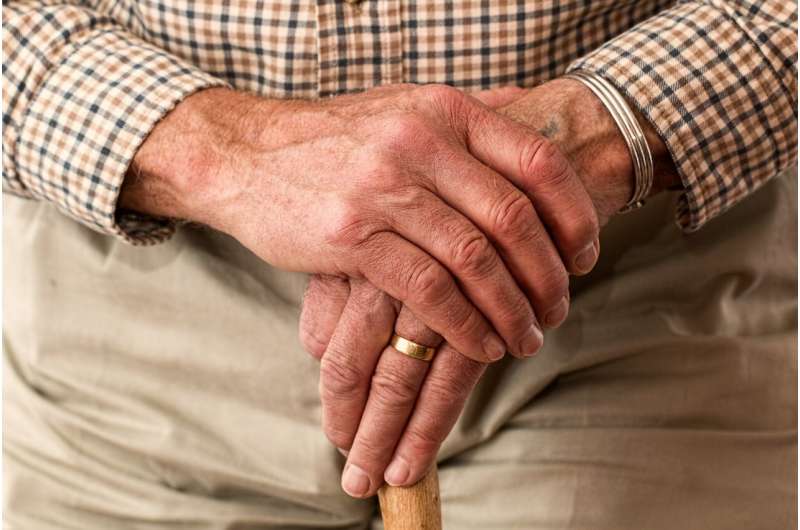
Doctors can safely lower the dose of cancer treatment such as chemotherapy without impacting survival for adults older than 70 who are at high risk for toxic side effects. The results are from a potentially practice-changing new study, published in The Lancet, and led by a Wilmot Cancer Institute scientist at the University of Rochester Medical Center.
Oncologists have been fearful of deviating from standard guidelines for cancer treatment. But the new study proves that more personalized care can be delivered safely to older adults, based on their medical histories and individual circumstances.
The randomized clinical trial involved 718 patients with a mean age of 72, who had advanced cancer and other aging-related conditions. Results show that patients who received a geriatric assessment (GA) benefited from less serious side effects, fewer falls, and other favorable medication changes that protected their overall health. The Lancet data adds to a growing collection of geriatric oncology research addressing the most effective ways to treat the oldest people facing cancer.
“Giving oncologists an evidence-based tool that allows them to make adjustments based on a patient’s fitness is very powerful and an excellent step forward in cancer care delivery,” said Supriya Mohile, M.D., M.S., the Philip and Marilyn Wehrheim professor of Medicine, Hematology/Oncology and Surgery at URMC and a Wilmot research program leader. She is the corresponding and first author of The Lancet article, and has been an award-winning national leader in geriatric oncology, helping to establish new guidelines for the use of geriatric assessments put forth by the American Society of Clinical Oncology (ASCO).
Evelyn Bailey, 75, learned firsthand about tailored care. Last February, she was in a car accident and while emergency room doctors were evaluating her injuries, they discovered a tumor on her pancreas.
Next came a whirlwind of tests and many conversations with specialists and a geriatric oncology team, which was led by Mohile.
“I was scared out of my mind,” Bailey said. “But I have very good feelings about the whole experience. I was never ‘told’ what to do. I was told what the options were, what the side effects might be, and they didn’t push me farther than I was willing to go, and took into account what my body could handle. I had to get my head wrapped around all of this—and I’ve been very pleased not only with the treatment but with the support I’ve received.”
Treating the whole person
The geriatric assessment tool was a major factor in Bailey’s care and the focus of The Lancet study.
A GA gives oncologists a fuller picture of the patient, measuring the impact of other medical conditions (diabetes, for example), physical functionality and the likelihood of falls, mental function, and the level of family and social support.
Prior research by Mohile’s team has shown the GA can improve communication, decision-making, and help with aging-related conditions. Many adults have reported they would skip treatment such as chemotherapy if the risk of serious side effects were too high, Mohile said.
“It’s very different getting cancer when you’re 74 or 75 versus when you’re 45 or 50,” said Bailey, who has received chemotherapy and radiation—the dosing was based on her geriatric assessment results—and also nutritional support, exercise guidance to improve mobility as she heals from the accident, and advice on safety at home.
Despite strong advocacy and recommendations by ASCO and the national Cancer and Aging Research Group (CARG), geriatric assessments are still not used frequently in community oncology clinics across the country. Researchers believe the latest study could increase usage.
“The impact of this specialized geriatric assessment, combined with appropriate multidisciplinary interventions, substantially reduces toxicity without compromising survival,” said senior author of the study, William Dale, M.D., Ph.D., the Arthur M. Coppola Family Chair in Supportive Care Medicine and director of the Center for Cancer and Aging at City of Hope, a cancer research and treatment organization near Los Angeles.
“If this were a new drug trial, we’d be clamoring for expedited approval of it for our elders,” said Dale, who serves with Mohile as two of the co-leaders of CARG. “Thankfully, the tools needed to implement it are already available.”
Investigators able to reach a broad sample of patients by leveraging Wilmot’s position as a hub for the National Community Oncology Research Program or NCORP, a network of cancer care providers at more than 1,000 NCORP-affiliated clinics in 44 states.
The research payoff
Aging is the biggest risk factor for cancer, and yet older adults have been historically underrepresented in cancer clinical trials. The study noted that 60 percent of all cancers and 70 percent of all cancer deaths occur in older adults—elevating the importance of geriatric oncology research.
Data show that in the 27-county Rochester region across western and central New York from which Wilmot draws patients, the population is older than in the rest of the state and ranks older than national averages.
Mohile’s research is critical, particularly given the composition of the region, said Richard Dunne, M.D., who is Bailey’s medical oncologist at Wilmot.
“We do not need to choose between a patient’s longevity and whether they can tolerate treatment,” Dunne said. “If managed properly, you can have both. The care of older adults with cancer is complex. They tend to have multiple co-morbidities, take more medications, and be at higher risk for malnutrition and muscle wasting.”
He added: “Determining the appropriate starting dose of chemotherapy in older adults can be a daunting task for oncologists. Using the geriatric assessment tool has been a tremendous asset to my clinical practice and for my patients, and we need to continue to come up with novel ways to reduce treatment toxicity.”
Bailey’s goal was to achieve the independence she enjoyed before the accident and cancer diagnosis. So far, so good. She is back to operating her private tutoring business and volunteering in the community.
Source: Read Full Article
